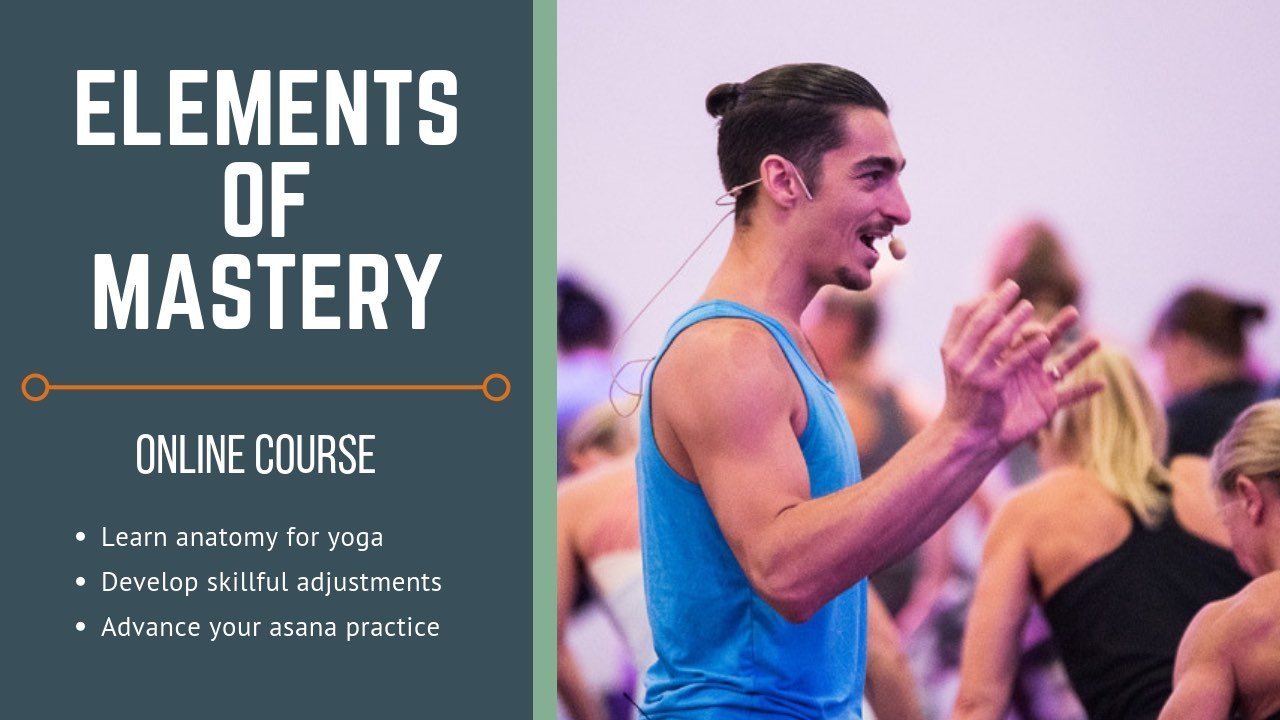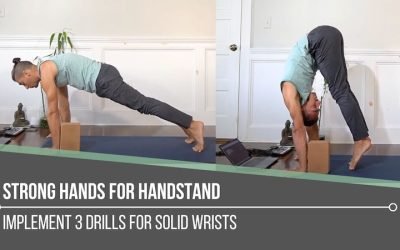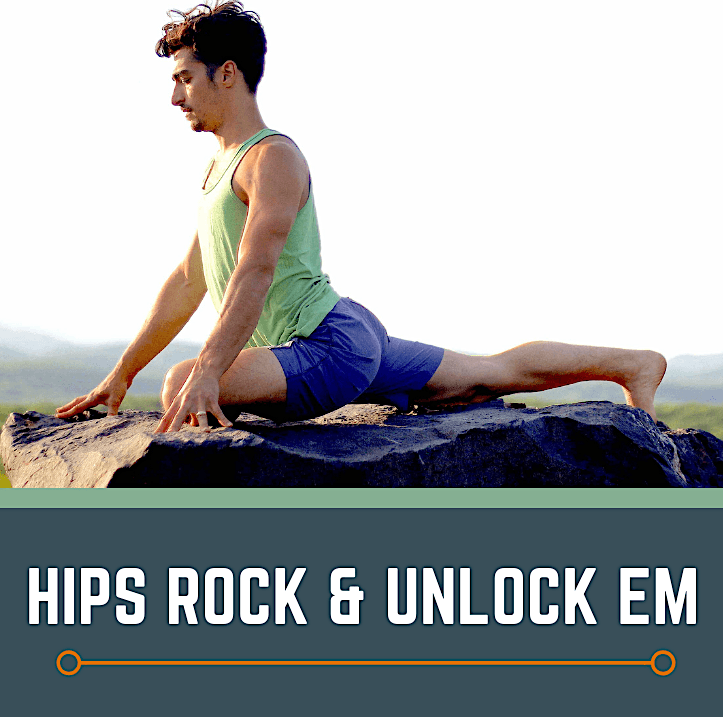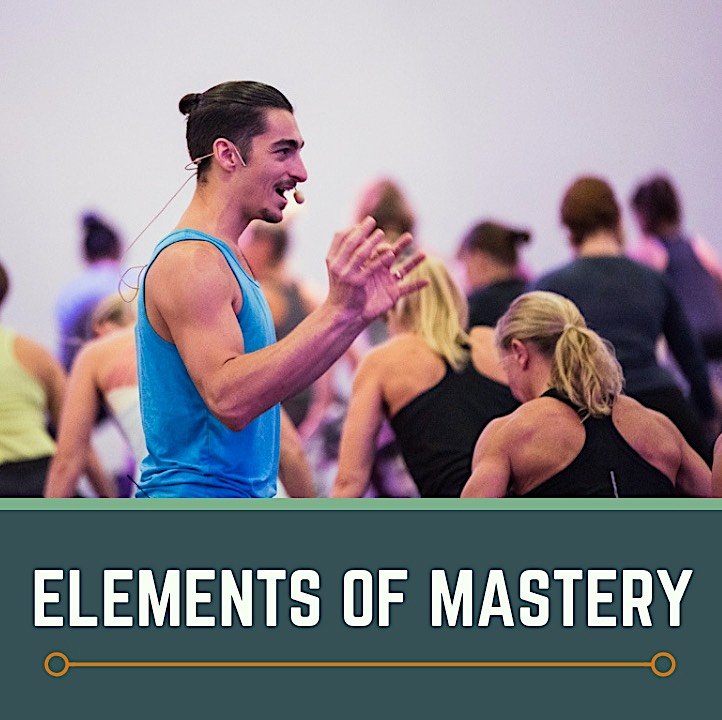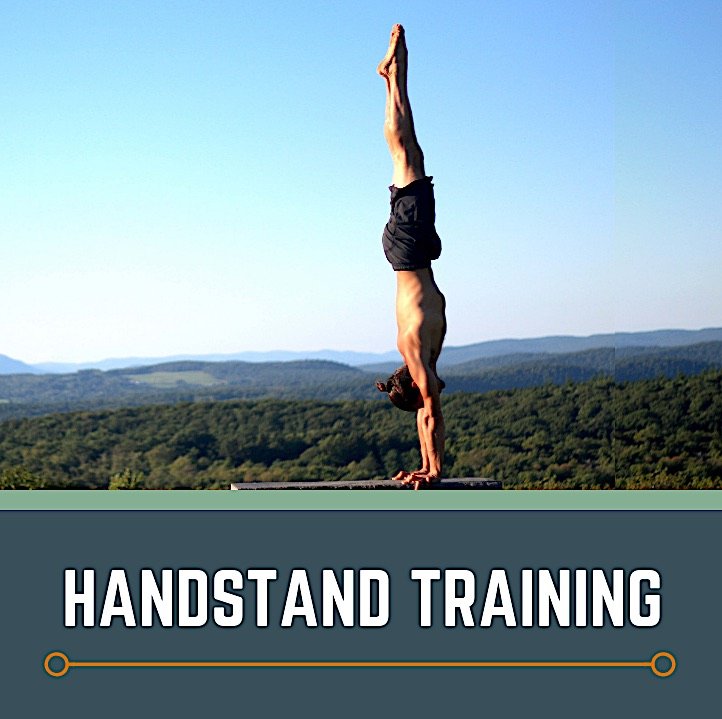Strong Hands For HandstandSTABILITYSTRONG HANDS FOR HANDSTAND When it comes to building strength for handstand, it starts at the base: our hands. Developing strong hands means targeting the wrist flexors, the very muscles that help create a trustworthy foundation....
Backbends and the Glutes
Should I Engage my Buttocks in a Backbend?
In the yoga world, there are many opinions on alignment and what muscles “should” or “should not” be engaged. One of the common questions I get is, “Should I engage my buttocks in Wheel pose or bridge pose?” I decided it’s time to address this question with a video response to help clarify the anatomy behind the posture.
In the video, I go over the anatomy of Full Wheel aka Upward Facing Bow or Urdva Danurasana. The action at the hip joint in this pose is called extension. This is when your thigh bones go back behind your pelvis; think of the back leg in a crescent lunge pose. The muscles that create extension at the hip are the Gluteus Maximus, Hamstrings, and Adductor Magnus. The Gluteus Maximus is the big buttock muscle that most of us see as “The Butt.” To easily answer the question of whether one should engage their buttocks or not when going into Urdva Danurasana, I would say yes of course. To be more specific, if you are trying to go into extension at the hip it is incredibly useful to employ the muscles that create that action.
“Wait, why have people told me to relax my butt??” The origin of this cue was based on the fact that so many people splay out their knees, which is a result of external rotation at the hip. One of the muscles that create external rotation at the hip is the Gluteus Maximus…yes, it performs both actions. So by trying to relax that muscle, you may not externally rotate as much. The issue with that is that the over external rotation is mostly a problem if you are using the deep external rotators of the buttocks – this could throw off the sacrum and cause the pinch in your upper pelvis, hip, or low back.
My personal suggestion is simply to turn on your internal rotators, which are your outer gluteus muscles (gluteus medius and minimus), TFL, and Adductors (inner thigh muscles). Don’t worry, you don’t need to know these muscles in order to internally rotate your thighs. All you need to do is focus on pressing down through your inner heels and big toe mound. By focusing on pressing into your inner feet, you will undoubtedly turn on your internal rotators without compromising the extension at the hip that is gained from the Gluteus Maximus engagement.
With my mentorship students, I break down the difference between what I call Balancing Action and Fundamental Action. Knowing the difference makes it so much easier to know what is appropriate for yourself in any given posture. A Fundamental Action is any action that is required for the posture to exist. In the case of Urdva Danurasana, the Fundamental Action at the hips is Extension. Without the action of extension, your hips wouldn’t leave the ground. A balancing action is any action that is the opposite of the fundamental action, or the opposite of what the tendency is when creating the fundamental action. In this case, when creating the fundamental action of extension at the hips, the tendency will be to let the knees splay out to the sides (external rotation at the hips). A balancing action, in this case, is Internal Rotation at the hips which would keep the knees straight forward. Just to clarify, the direction of your knees isn’t the direct concern, it’s more about what is happening in the hips and sacrum that is of importance.
Can you do Urdva Danurasana with externally rotated legs? Yes of course! Will it be good for you? That’s a great question, and dependent upon so many factors in your body. My suggestion is until you have a deep relationship with your body and know what is a good sensation and what is not good, simply stick to the balancing action of internal rotation at the thighs by pressing the inner heels down.
I recognize this conversation is quite technical. If this was challenging to follow, simply watch the video to gain the visual aid as well. Enjoy strengthening and engaging your buttocks! If you are interested in learning more about techniques and anatomy, let’s set up a call to see if the Mentorship Mastery Program is right for you!
Hip extension
In order to go into hip extension in poses like Urdva Danurasana (full wheel pose) you will need to recruit your hip extensor muscles, which are located in the buttocks. By relaxing these muscles you are relying on your back muscles to do the heavy lifting.
Elements of Mastery
Gain masterful body awareness with this easy to follow, step-by-step approach to the yoga practice. With over 40 hours of videos, podcasts, and written materials this is the most in-depth online yoga training you can find and it’s exclusively lead by Matt Giordano. Step on to the road of Mastery, and establish your heart’s connection with nature today!
3 Steps to Activate the Buttocks
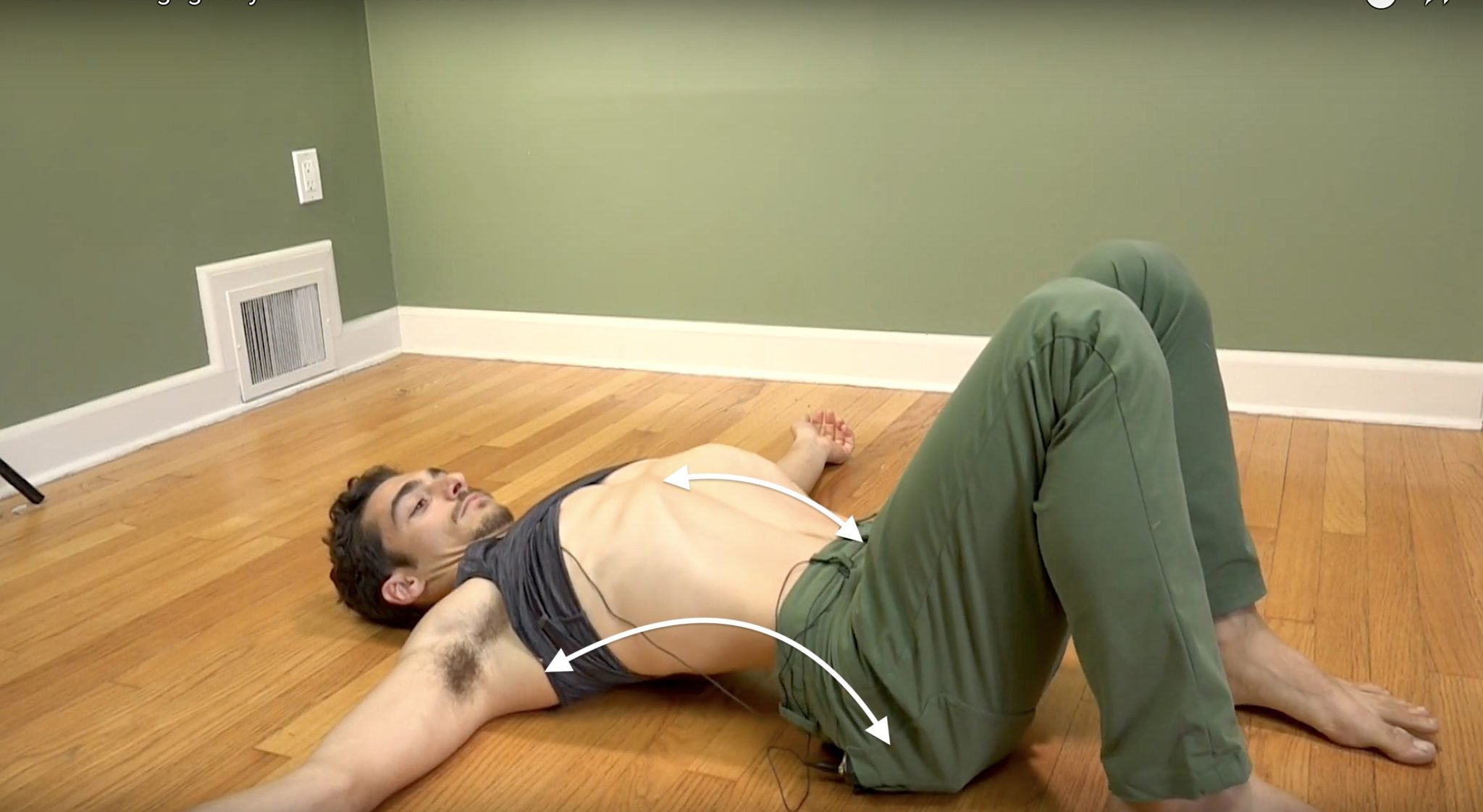
Step 1 - form The Arch
Forming the arch first is recommended prior to placing more force and pressure on the spine and hips. If you don’t feel a sense of spaciousness while lying on the ground, you certainly won’t feel it when applying more pressure. Often the inability to activate the transverse abdominals correlates with a lack of spaciousness between the vertebrae of the spine. Transverse abdominals cause the vacuum effect in the abdomen and typically make it easier to lengthen the solar plexus away from the pubic bone which is indicated with the smaller arrow. The larger arrow is to call your attention to the evenness of the curve. Most people place their backbend in just the mobile parts of their spine and doing so will simply exacerbate your patterns. Try to put less effort into the mobile areas, and more in the stiff areas.
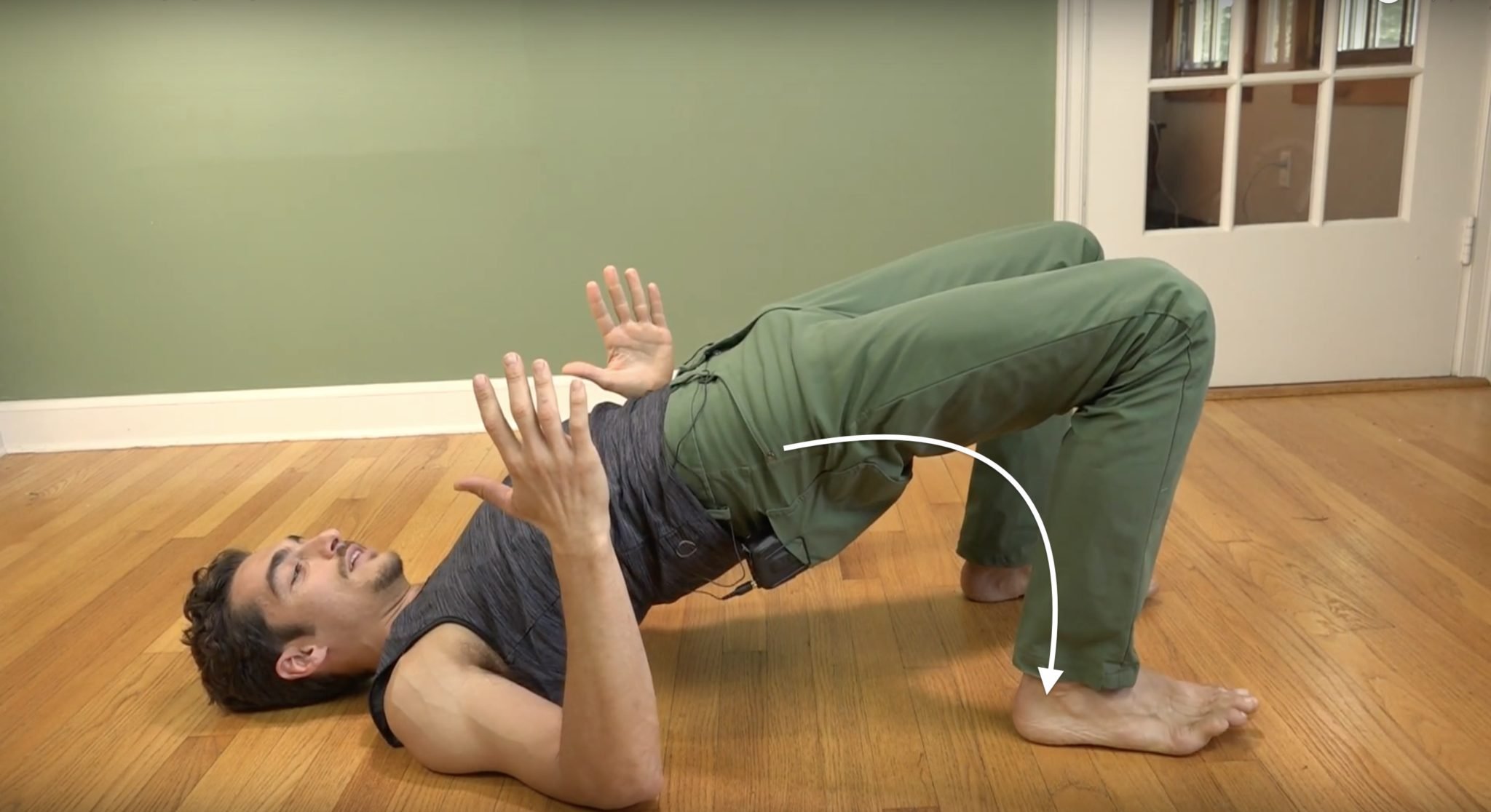
Step 2: extension at the Hip
When doing postures like bridge and full wheel, this action is crucial in that it is what creates the pose. Without activating the buttocks you will be relying on your back muscles alone to lift your hips up and as a result, you will likely cause too much compression in the spine. This doesn’t mean that activating the buttock will be a magic pill but it will help to disperse the pressure. In addition, the buttock muscles are super important to our posture when walking, standing, and even sitting. Maintaining strength and awareness of what they do in the body is crucial to health and longevity. To make step three easier, it is helpful to think of pressing down through the inner heels however, if that feels too challenging, simply press the outer heels down first and then work step 3 second.
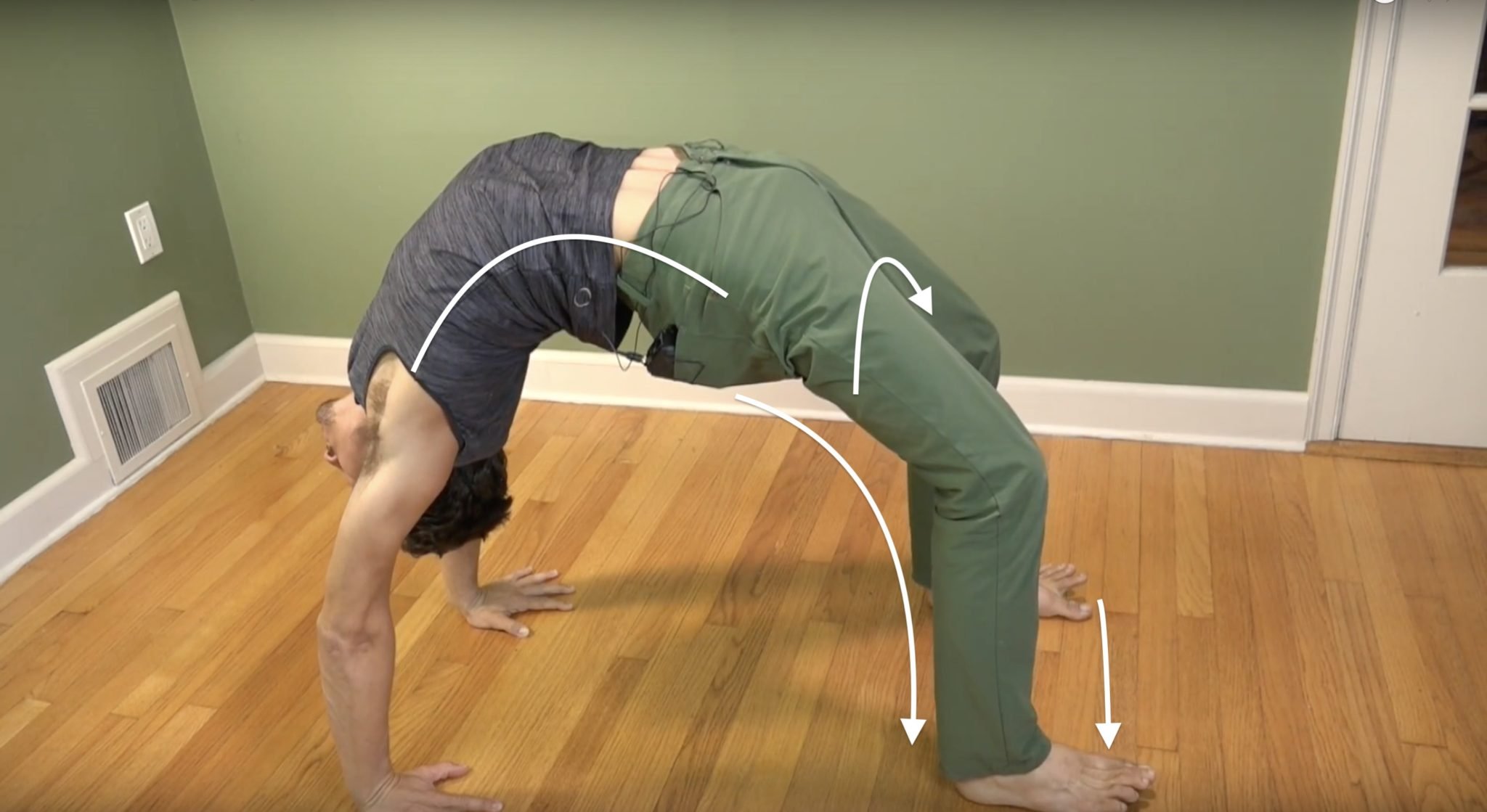
Step 3: Balancing Action
Internally rotating the thigh bones will balance out the external rotation that happens when pressing down into the heels. When pressing down you are activating the hip extensors, and since the extensors of the hip are also external rotators, the thighs will tend to externally rotate. There is nothing inherently wrong with this however, it could cause over-activation of some of the deep external rotators causing unnecessary tension in the hips or sacrum. Some people will also experience sacral pressure as a result of the force placed on the S.I (sacral-iliac) joint from extension and external rotation. By activating the internal rotators you can balance out the hip extension and maintain neutral rotation and likely find more ease in the S.I joint.
Releasing the Buttocks
One of the issues people experience after activating their buttocks is gripping sensation. This often happens when the muscles are weak and trying to find any way to engage. This goes away as the muscles get stronger but the easiest way to release this is a posture like pigeon pose to stretch these muscles after backbends. Pigeon pose is also wonderful in that it doesn’t overly round the spine after backbending which could otherwise be dangerous on the intervertebral discs.
Gravity: Not All Backbends Are the Same
The action of activating the buttock muscles here is most important in bridge and wheel pose because of the relationship to gravity. If we were doing something like bow pose it may still be beneficial to activate the buttocks, but chances are it won’t have the same effect and might even cause more compression on the spine. In that pose, the quads are typically more important because your hands are connected to your feet. When grabbing your feet for this posture, you will have activated the hamstrings and buttock already and the work in this posture will be lengthening the arch and finding an even disbursement of extension in the spinal column. This doesn’t mean you should not engage the buttocks, but in this case, your hands holding your feet are the cause for hip extension. For now use the tips in this blog for postures like full wheel and bridge, as well as the one leg up variations.
Hips: Rock & Unlock 'Em
Get 2 full hours with Matt Giordano focusing on the techniques that increase the range of motion in your hips and provide long-lasting freedom. You will have immediate, unlimited access, and can enjoy the benefits today!
Continue Learning
Strong Hands For Handstand
Handstand Actions
Handstand ActionsLEAN, GRIP, PUSHHANDSTAND ACTIONS Handstand isn’t something we conquer in a single class, it’s a layered process that demands repetition and refinement. There are certain key handstand actions that are non-negotiable: lifting the shoulders up to the...
Handstand Mechanics
Handstand MechanicsINVERSIONHANDSTAND MECHANICS Stability, strength, and coordination come together in the pursuit of mastering handstand mechanics. One of the most critical foundations is internal rotation at the hip joints, which can aid with certain entries and...
Stable Sirsasana
Stable SirsasanaHEADSTANDSTABLE SIRSASANA Creating a stable Sirsasana is less about the final pose and more about the mechanics that lead us there. From weight transfer and spinal alignment to hamstring flexibility and shoulder engagement, each layer matters. Unlike...
Explore Hip Rotation
Explore Hip RotationSURYA YANTRASANAEXPLORE HIP ROTATION Hip rotation isn’t just an anatomical concept—it’s an open invitation to become more intimate with our body’s story. In yoga, we often live in lateral (external) rotation, especially in hip-opening postures....
Step Up Your Side Plank
Step Up Your Side PlankVASISTHASANASTEP UP YOUR SIDE PLANK Side Plank might look simple, but true proficiency starts in the details. One of the keys to refining the posture is learning how opposing muscle groups create an isometric contraction—a subtle engagement that...
THANKS FOR JOINING
Hips: Rock & Unlock 'Em
Get 2 full hours with Matt Giordano focusing on the techniques that increase the range of motion in your hips and provide long lasting freedom. You will have immediate, unlimited access, and can enjoy the benefits today!
The Elements of Mastery
Are you looking to go deeper in your study of yoga and want an online resource to support you in your journey? This training packed with content to advance your practice and teaching! You can take your time or immerse yourself in the training.
THE FREE TECHNIQUE PACK
When You Subscribe, You Will Get Instant Access to
- the Technique Pack: 15 yoga pose breakdowns
- exclusive online course discounts
- exclusive blogs and videos

